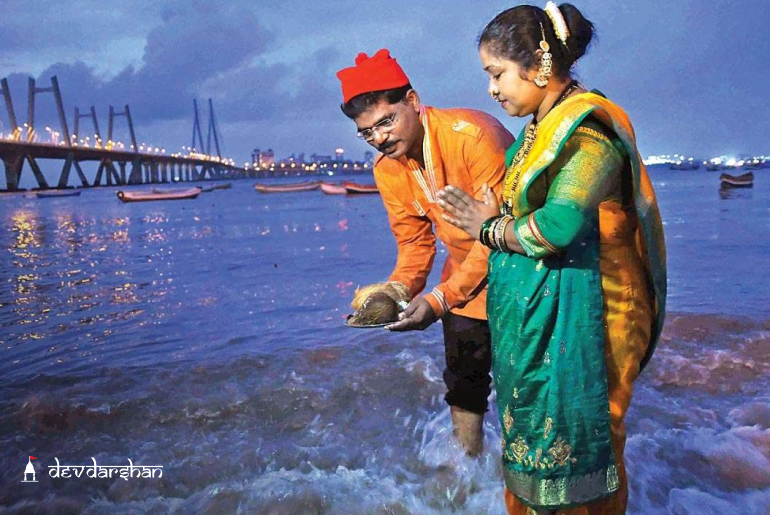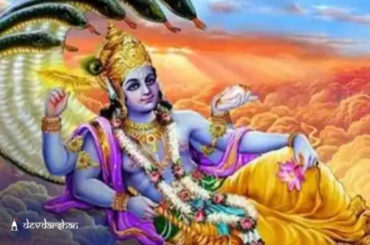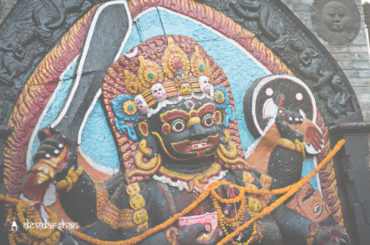Narali Purnima falls on the full moon day in the month of Shravan, which typically falls between July and August. It is a significant day in the Hindu calendar as many Devotees observe fast and perform certain religious rituals for good luck and fortune.
Narali or Nariyal Purnima also known as Shravana Purnima is popular in Maharashtra, especially in coastal Maharashtra and Konkani regions.
This year, Narali Purnima falls on August 30, 2023. It is a significant day when coconuts, also known as ‘Narials’, are ceremoniously cast into the sea as an offering to Varuna, the sea god. This festival holds great popularity among the communities residing along the Konkan and Maharashtra coasts in India.
During Nariyal Purnima, people worship God Varun and specifically offer coconuts to the deity associated with the sea. It is believed that conducting this Puja on the auspicious day of Shravana Purnima appeases the sea god, providing protection to fishermen from any unfortunate occurrences or accidents.
Narali Purnima is primarily observed by the Kolis, which is the fishing community residing on the West Coast of India. The festival coincides with the gradual subsiding of the monsoon winds, enabling the fishermen to safely navigate the sea and resume their fishing activities.
Also Read: Importance of Lord Vishnu Puja on Purnima
So, let’s get to know more about the Date, Rituals and Significance of Narali Purnima 2023.
Narali Purnima 2023: Date, Muhurat and Timings
This year, Naryali Purnima will be observed on Thursday, August 31, 2023
- Purnima Tithi Starts: 10:58 a.m on August 30, 2023
- Purnima Tithi Ends: 7:05 a.m on August 31, 2023
Find Out Date and Muhurat of Asadha Purnima 2023
Significance of Naryali Purnima
Narali Purnima signifies the conclusion of the monsoon season in Maharashtra. It falls on the full moon day of the Hindu calendar month of Shravan. During this festive occasion, people offer coconuts to the sea as an act of devotion. It also marks the fishing and water trade commencement among the fishing community. The fishermen expressed their prayers and reverence to Varuna, the sea god, seeking a safe and prosperous journey on the waters. The festivities involve lively dancing, singing, and joyful celebrations. Traditional dishes, including sweet coconut rice accompanied by curry, are relished during this time.
The festival holds particular significance for the fishing community. Before the full moon day or Purnima of Shravan, it is considered the breeding season for fish. Consequently, fishermen refrain from fishing during this period to allow fish to reproduce without disturbance. As a result, fish consumption is also abstained from in the community. The conclusion of this abstinence occurs on Narali Purnima when a coconut is thrown into the sea during high tide. This act symbolizes a gesture to pacify the sea’s fierce currents and turbulent waves.
The choice of offering coconuts is attributed to their auspicious nature in Hindu festivals, as every part of the coconut tree—leaves, bark, and the coconut itself—is deemed highly beneficial to humans. Thus, the coconut offering is believed to appease the sea god for a safe and prosperous journey ahead on the waters. Additionally, the coconut, with its three visible ‘eyes’, is associated with Lord Shiva, who also possesses three eyes. Breaking a coconut before embarking on any new endeavour, in this case, the fishing and water trade season is considered an auspicious practice.
It is also believed that after Narali Purnima, the wind strength and direction change favourably for fishing, further enhancing the significance of this festival for the fishing community.
Also Read: Benefits of Lord Shiva during Shravan Maas
Narali Purnima 2023 Rites and Rituals
The rituals of Narali Purnima vary slightly among different regions and communities, but here are some common practices associated with the festival:
Coconut Offering: The primary ritual of Narali Purnima is offering coconuts to the sea. People visit the seashore or riverbanks and throw coconuts into the water as a symbol of devotion to Varuna, the sea god. This act is believed to seek blessings for a safe and prosperous journey on the waters.
Puja and Worship: People perform special prayers and worship rituals dedicated to Varuna and seek his blessings for protection and abundance. Devotees often visit temples dedicated to the sea god and offer prayers, flowers, incense, and fruits.
Holy Bath: Taking a ritualistic bath in the sea or a sacred river is considered auspicious on Narali Purnima. Devotees cleanse themselves physically and spiritually, purifying their bodies and seeking blessings for a new beginning.
Cultural Performances: Narali Purnima is a festive occasion accompanied by vibrant cultural performances. People engage in traditional dances, folk songs, and music near the seashore or community gatherings. It is a time of celebration and joy.
Traditional Food: Special dishes are prepared and shared among family and community members. Sweet coconut rice, known as Narali Bhaat or Narali Purnima Bhaat, is a popular delicacy associated with the festival. It is savoured with curry and enjoyed as part of the festive meal.
Decorations: Homes and places of worship are adorned with colourful decorations, including flowers, garlands, and rangoli (colourful patterns created with coloured powders or flowers). The festive atmosphere adds to the joyous spirit of the celebration.
Community Gatherings: Narali Purnima brings people together, especially among fishing communities. Community gatherings, cultural events, and processions are organized to commemorate the occasion. It is a time for socializing, strengthening bonds, and sharing the joy of the festival.
These rituals vary in different regions, and local customs and traditions may add additional elements to the celebration of Narali Purnima.
Also Read: How to Perform Lord Vishnu Puja on Purnima?
Mythological Legends Behind Phalgun Purnima
There is a mythological legend associated with this festival. So, let’s find out in detail.
Indeed, there is a popular legend associated with Narali Purnima that connects it to the epic Ramayana. According to the legend, Lord Ram, along with his army, built a bridge of floating stones called Ram Setu or Rama’s Bridge to cross the ocean and reach Lanka to rescue his wife, Sita, from the demon king Ravana. It is believed that Lord Varuna, the sea god, supported and held aloft this bridge, enabling Lord Ram’s successful journey. Therefore, the ritual of offering coconuts to the sea on Narali Purnima is seen as a way of expressing gratitude to Lord Varuna for his assistance during this significant event in the Ramayana.
Also Read: Ram Navami – The Festival of Lord Rama
Apart from the legend, the throwing of coconuts into the sea during Narali Purnima is also performed to seek the blessings of Varuna, the sea god, for a fruitful catch and a happy life. Fishermen and people associated with water-related professions believe that this offering will bring them prosperity, protection, and a successful fishing season.
Coconut is specifically chosen for this ritual because it is considered the purest offering available on earth. The water inside the coconut and the kernel within are believed to be unadulterated, symbolizing purity and sincerity in the offering made to the divine.
These beliefs and practices reflect the deep spiritual connection between the fishing communities and the sea, as well as their reverence for Varuna, the sea god, who is seen as the protector and provider of their livelihoods.
Benefits of Observing Naryali/Narali/Shravan Purnima Vrat
Observing Narali Purnima Vrat, or fasting on the day of Narali Purnima, is believed to bring several benefits. Here are some of the potential advantages associated with observing this vrat:
Spiritual Purification: Fasting on Narali Purnima is considered a form of spiritual purification. It allows individuals to cleanse their minds and bodies, promoting inner peace and harmony.
Seeking Blessings: The vrat is observed to seek the blessings of Lord Varuna, the sea god, and to express gratitude for the bounty and protection provided by the sea. It is believed that by observing this vrat, one can receive the blessings of Varuna for a prosperous and safe life.
Good Health: Fasting on Narali Purnima may have health benefits. It can give the digestive system a break, allowing it to rest and rejuvenate. Additionally, it promotes self-discipline and can help individuals develop a balanced approach to eating.
Enhancing Willpower: Fasting requires self-control and willpower. By observing the vrat, individuals can cultivate and strengthen their willpower, which can be beneficial in various aspects of life.
Spiritual Connection: Observing Narali Purnima Vrat helps individuals establish a deeper connection with their spiritual beliefs and traditions. It provides an opportunity for introspection, reflection, and devotion.
Cultural Significance: Participating in the vrat allows individuals to engage in a cultural and religious practice that has been followed by generations. It helps preserve and honour the traditions and rituals associated with Narali Purnima.
Community Bonding: Observing the vrat can also foster a sense of community and togetherness. People come together to participate in the festivities, share meals, and exchange greetings, strengthening social bonds.
Learn about the Religious Benefits of Fasting on Purnima
Check out various Online Puja and services provided by DevDarshan here and get your bookings done in one click. If you want to know more about Indian culture, Indian Temples, Pujas and festivals, then download the DevDarshan App. Don’t forget to share this blog if you liked.




